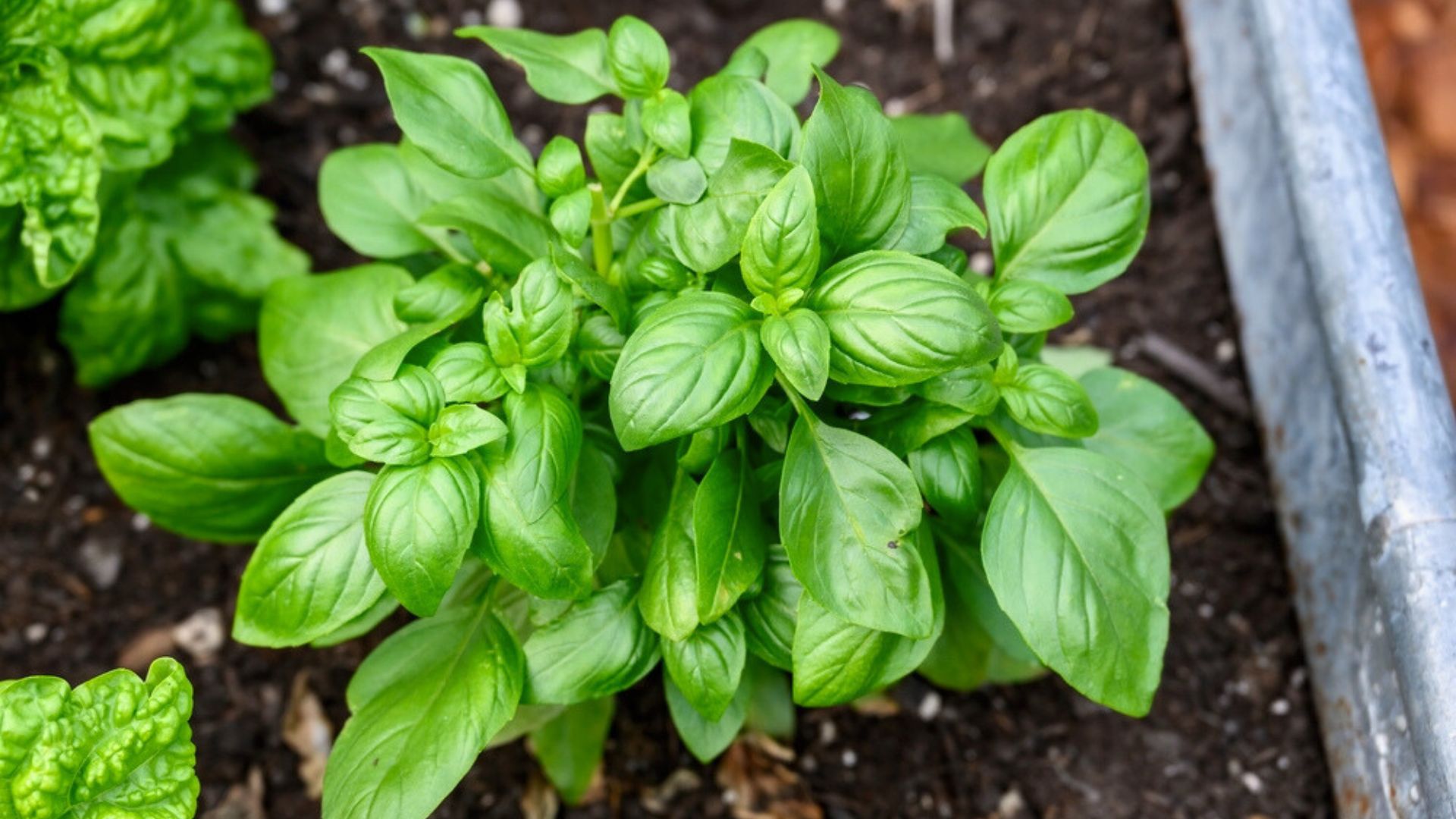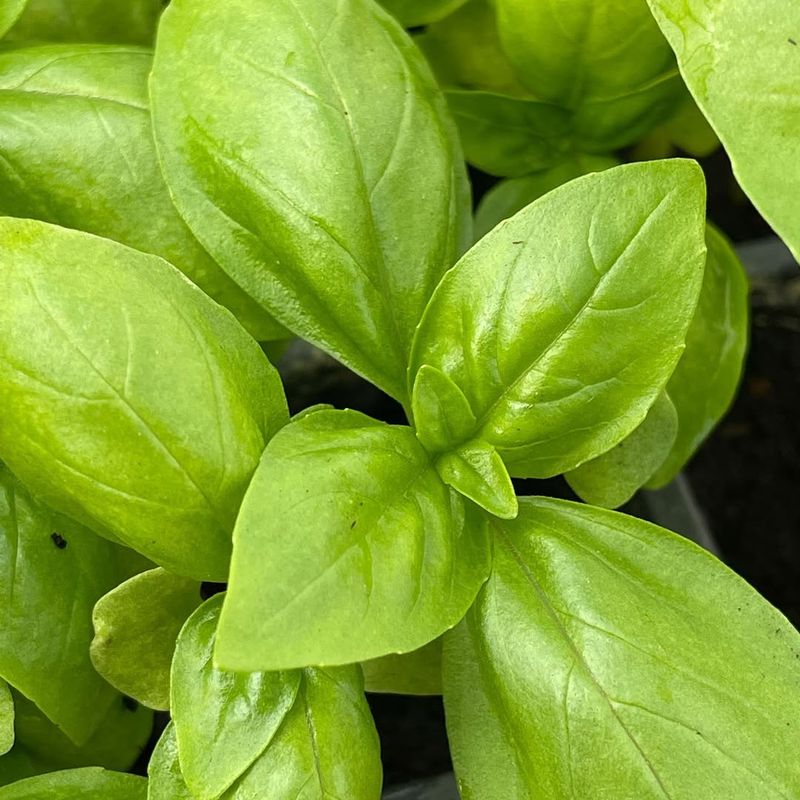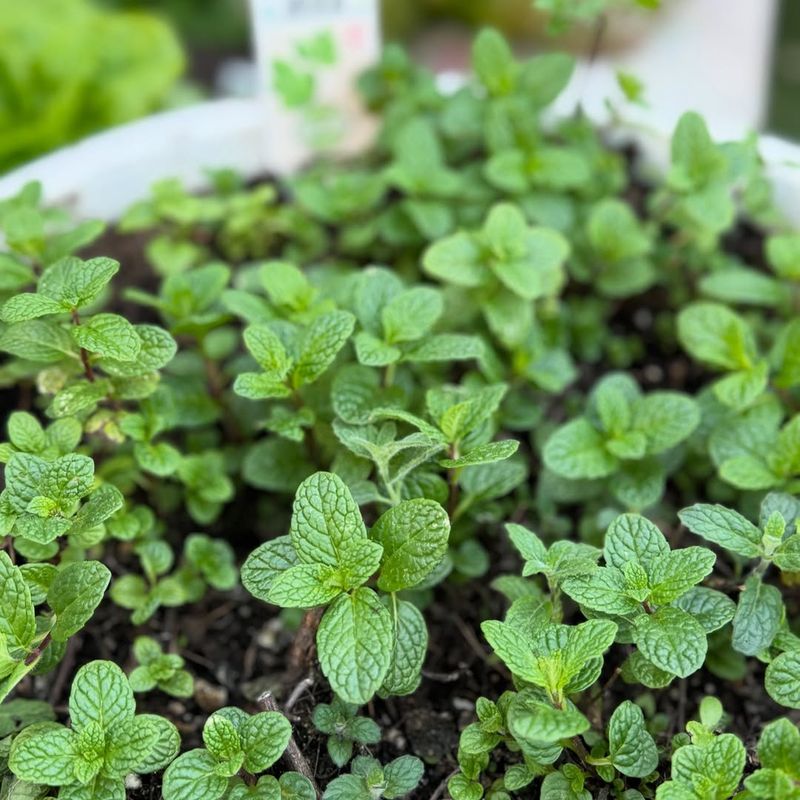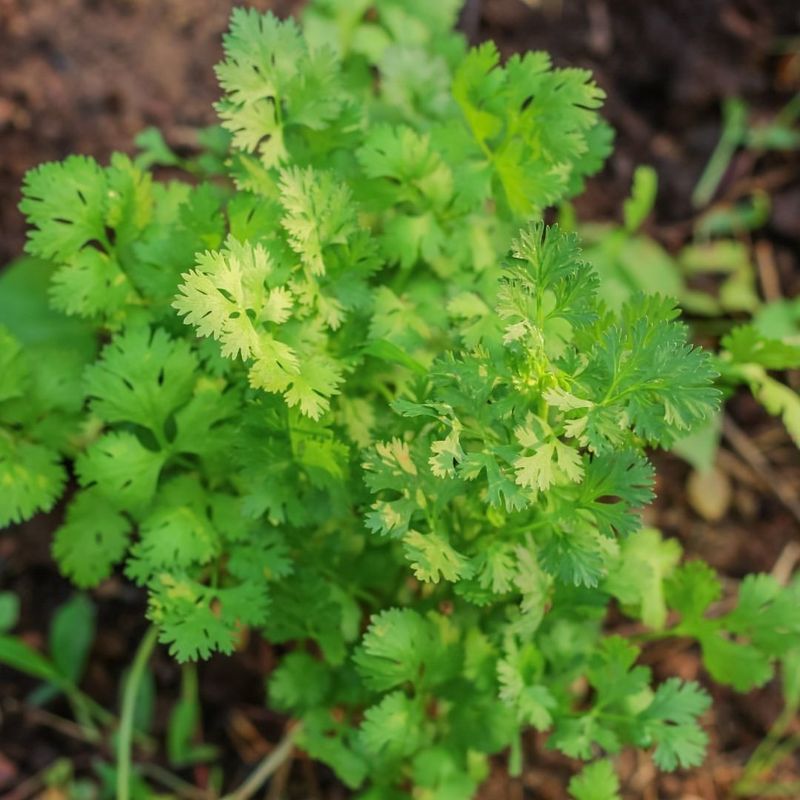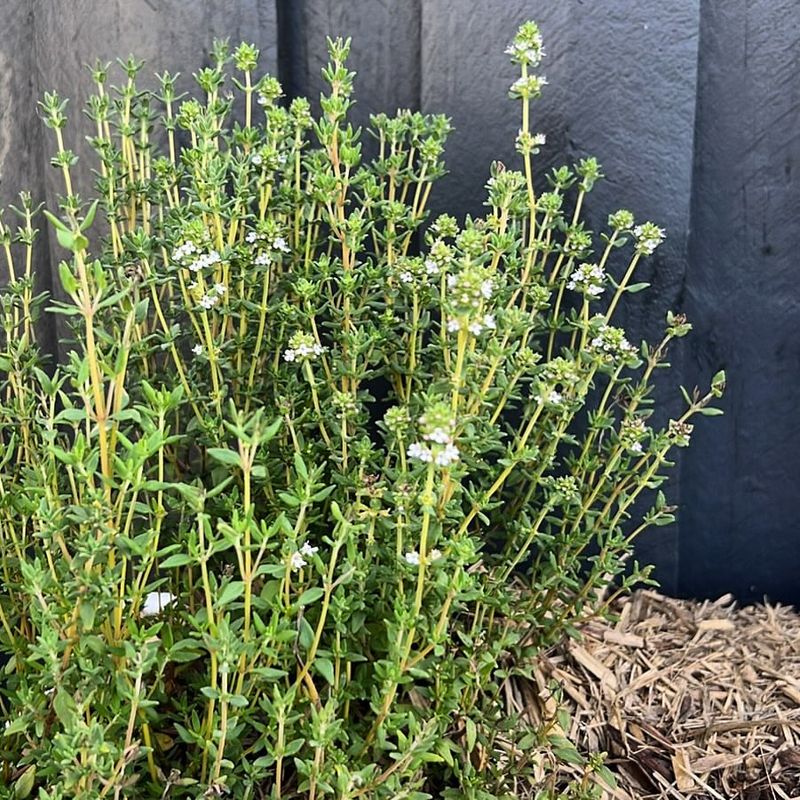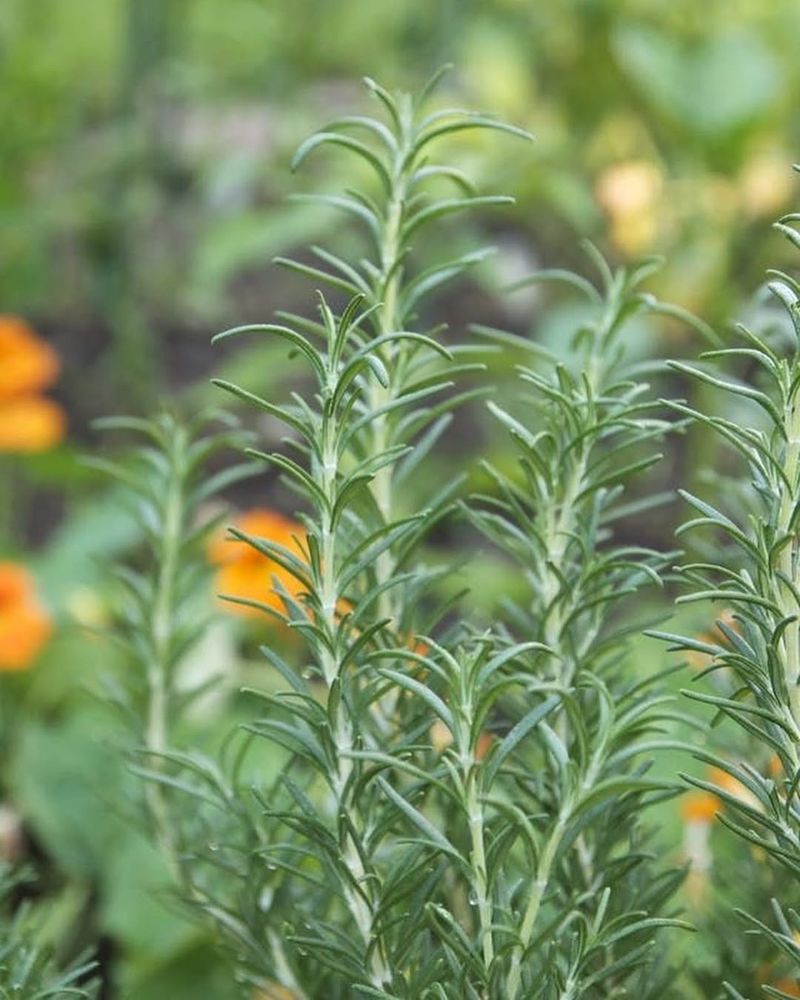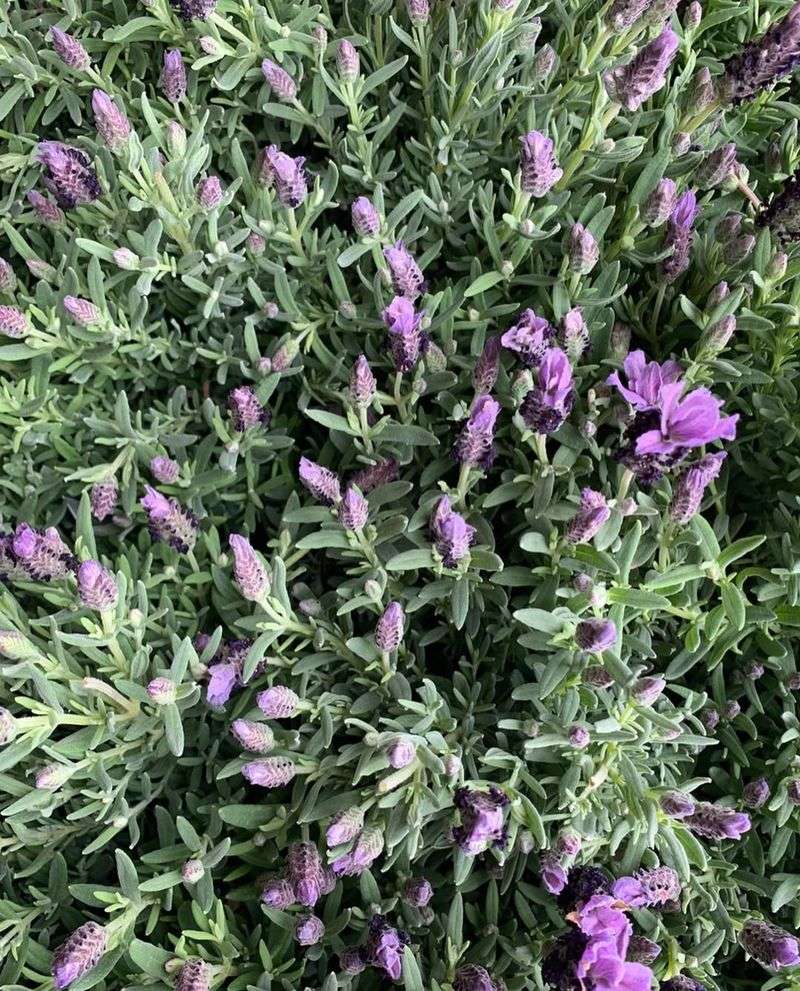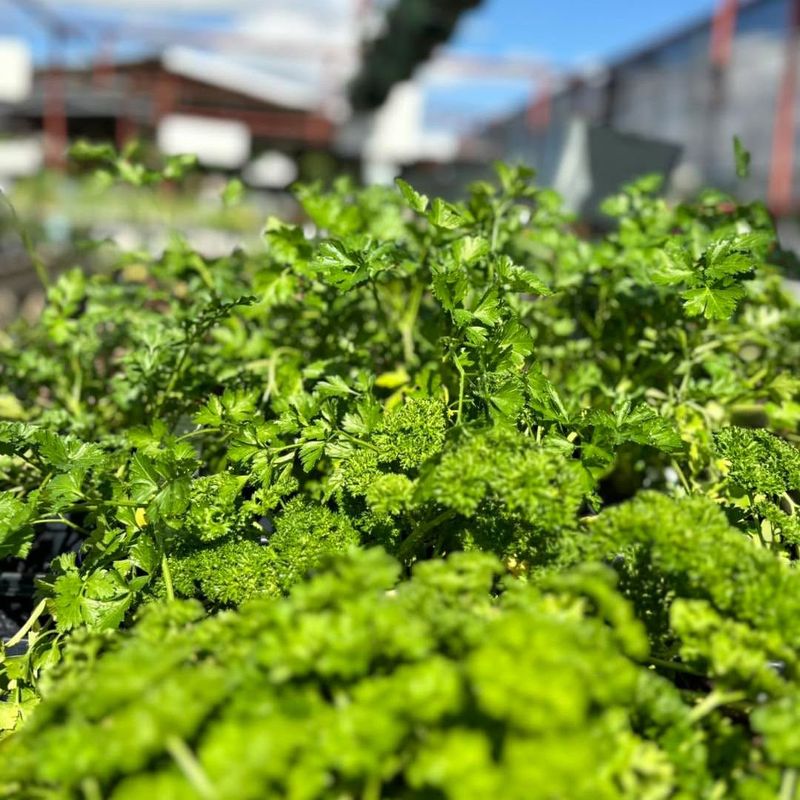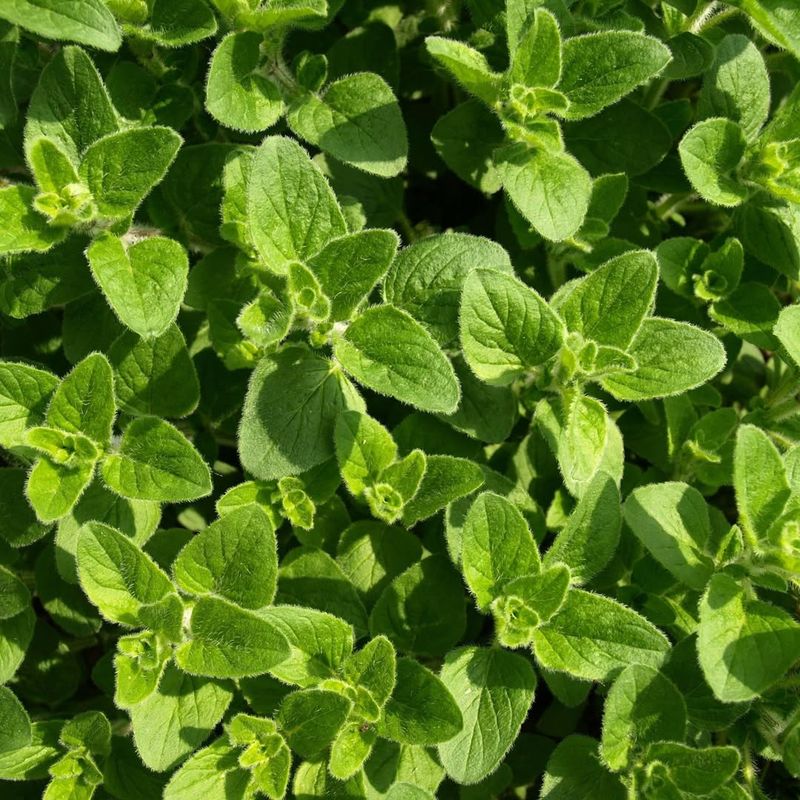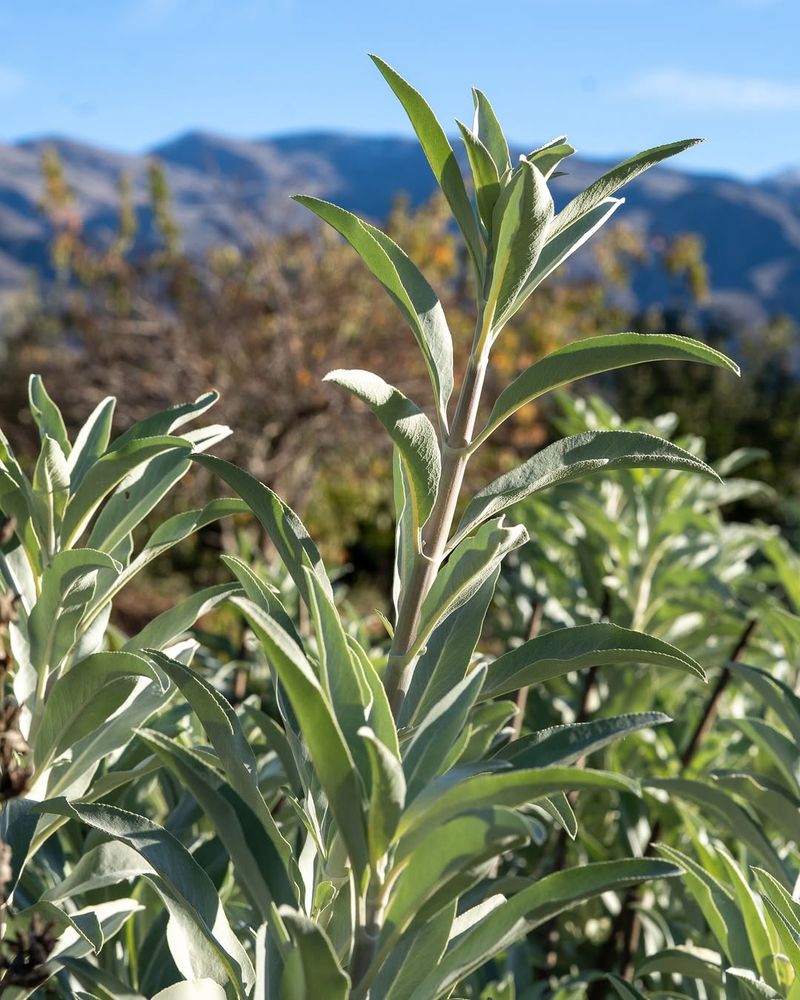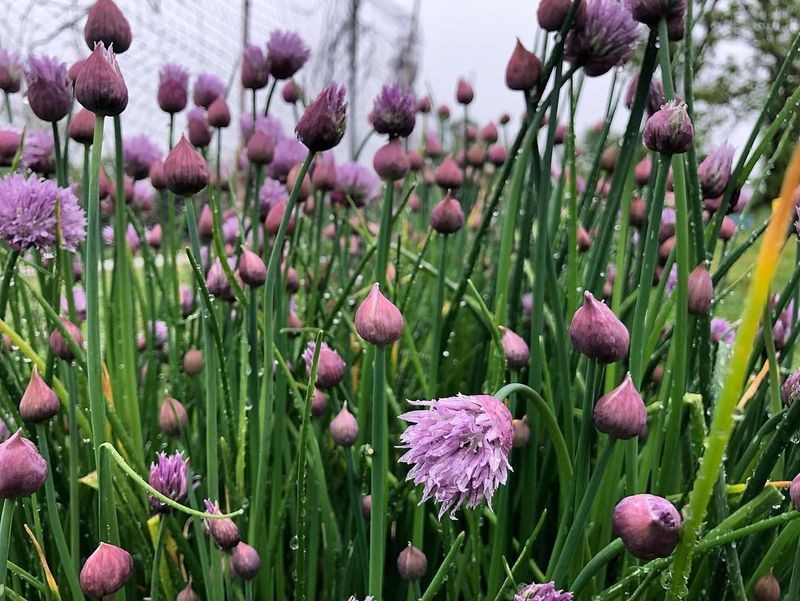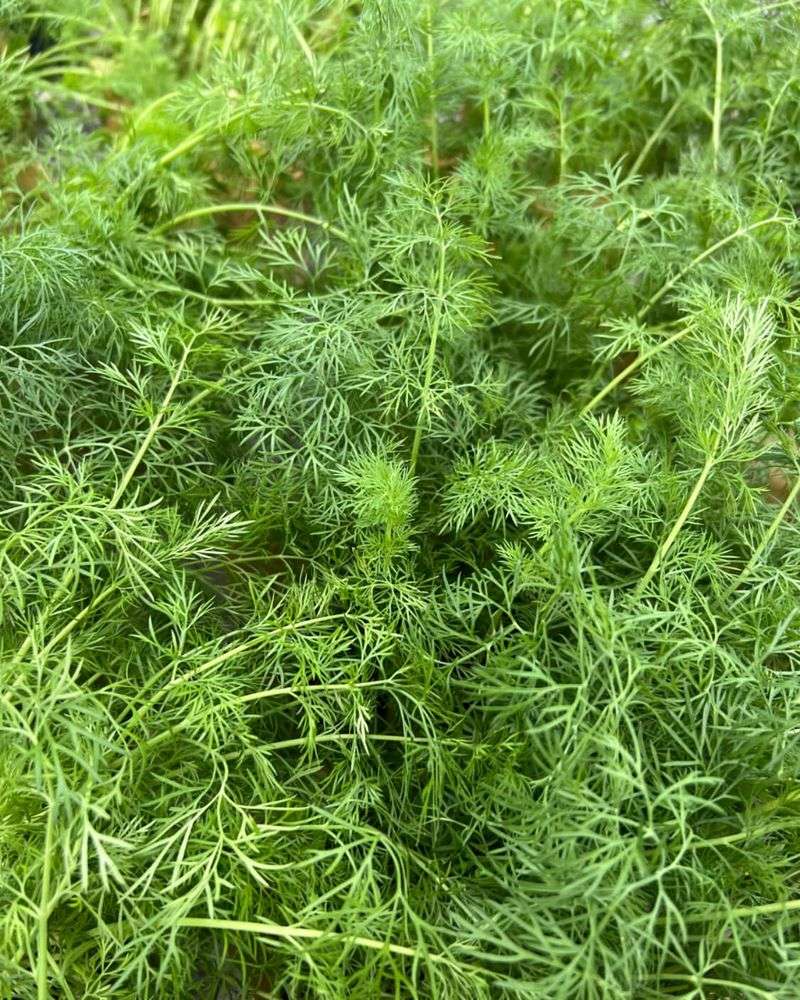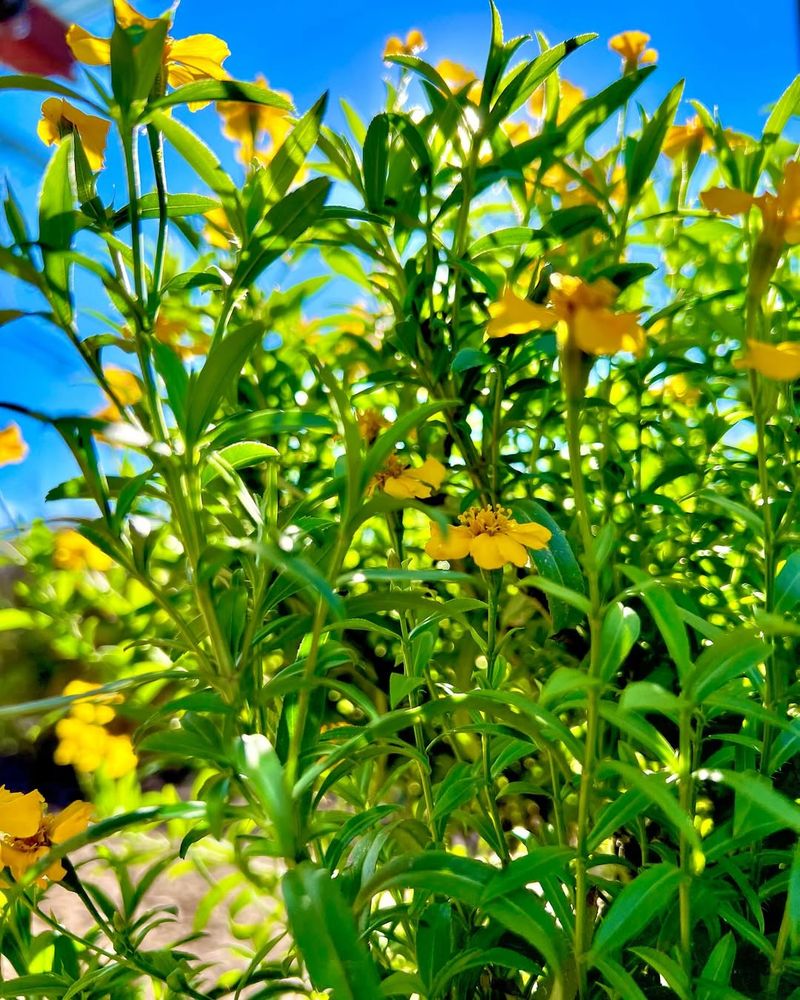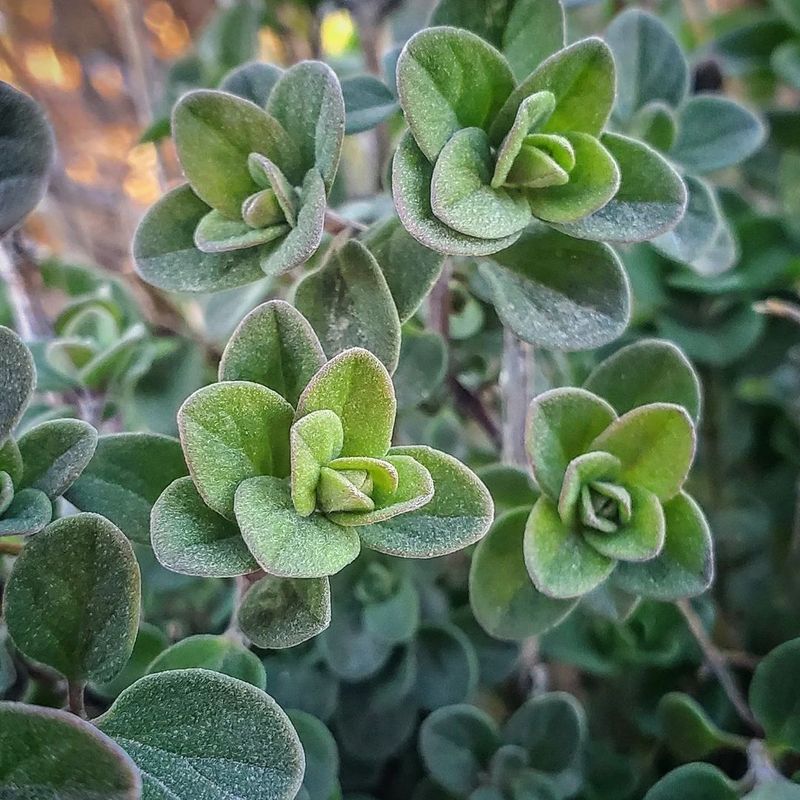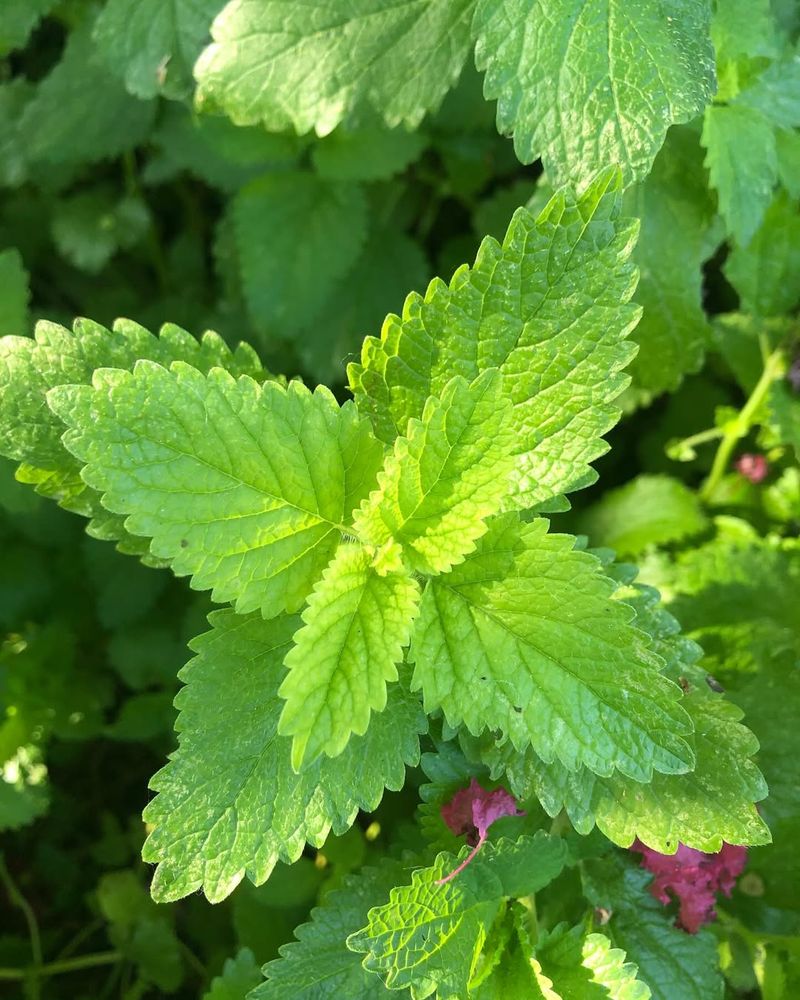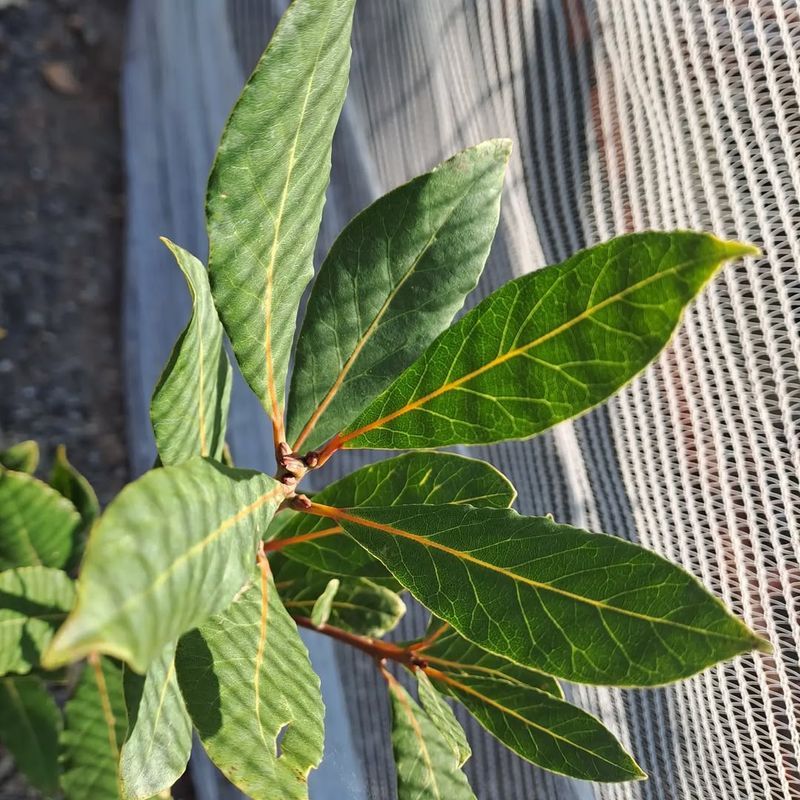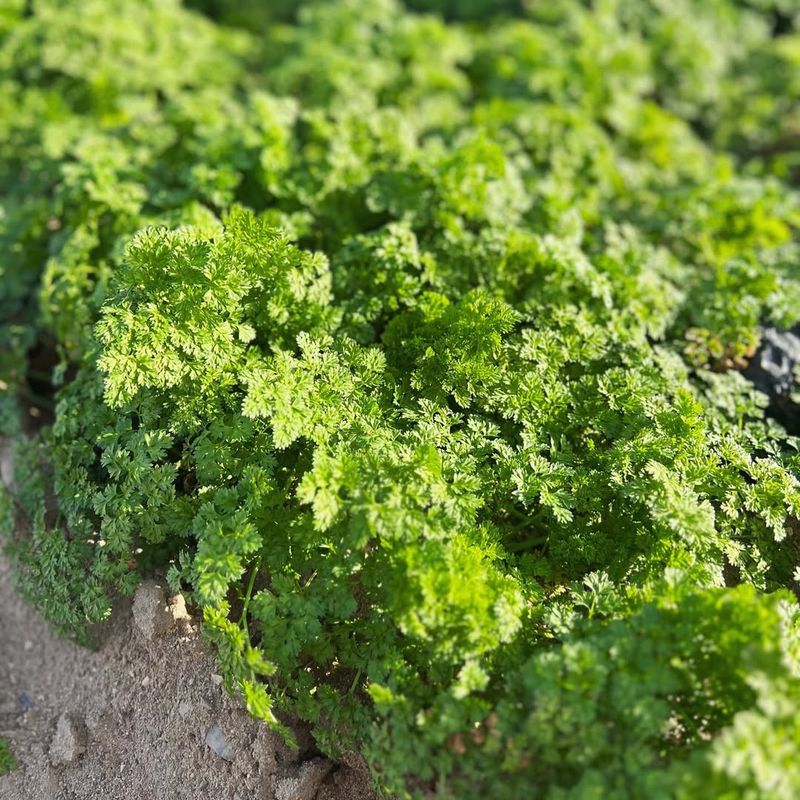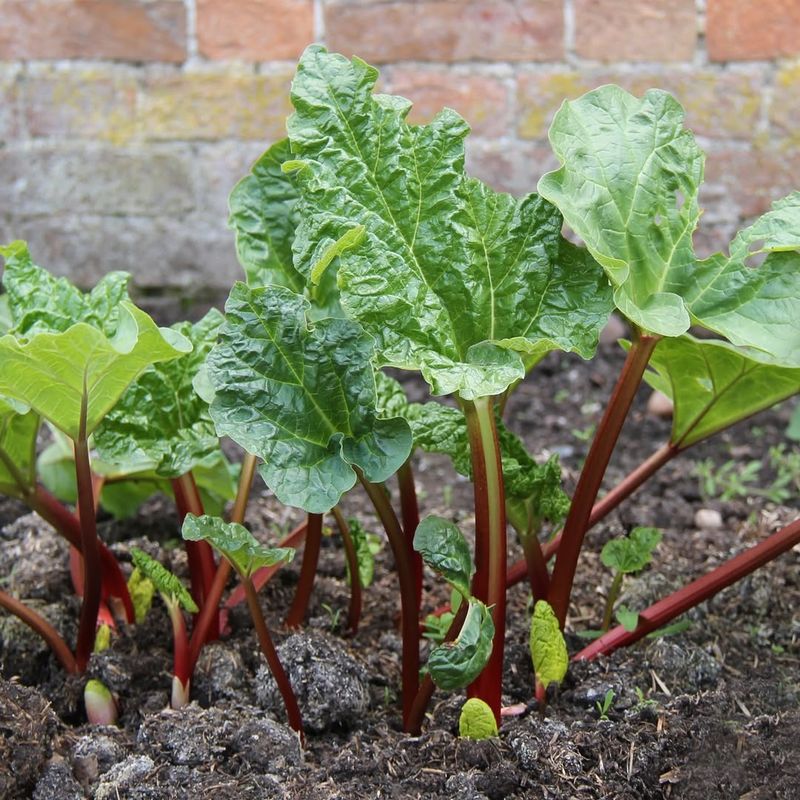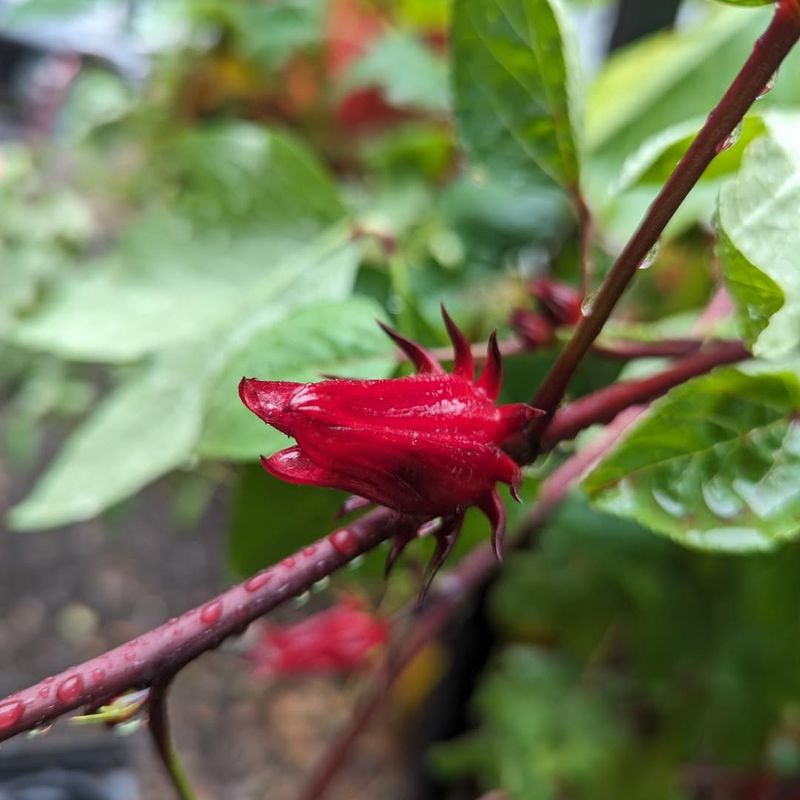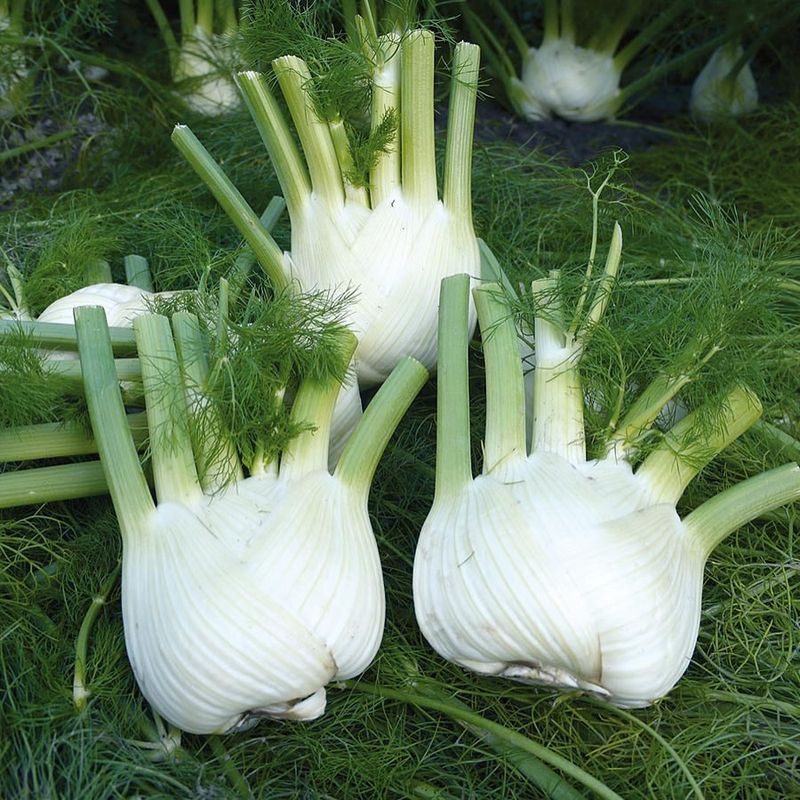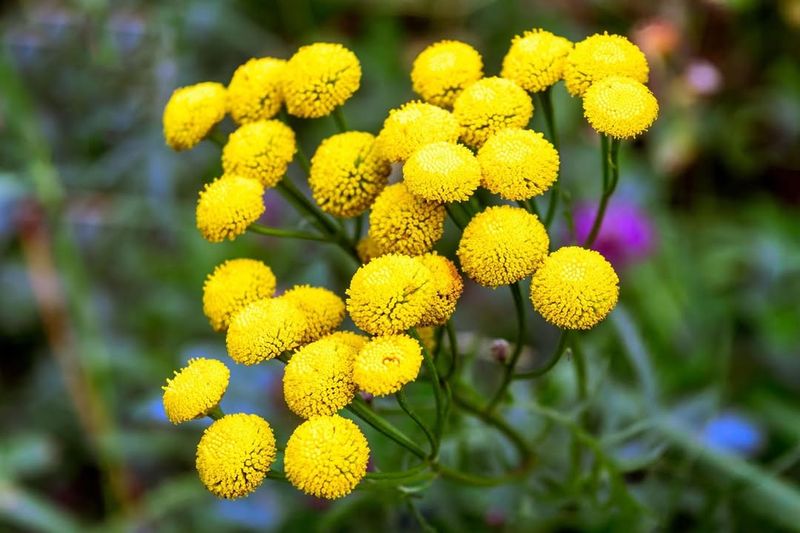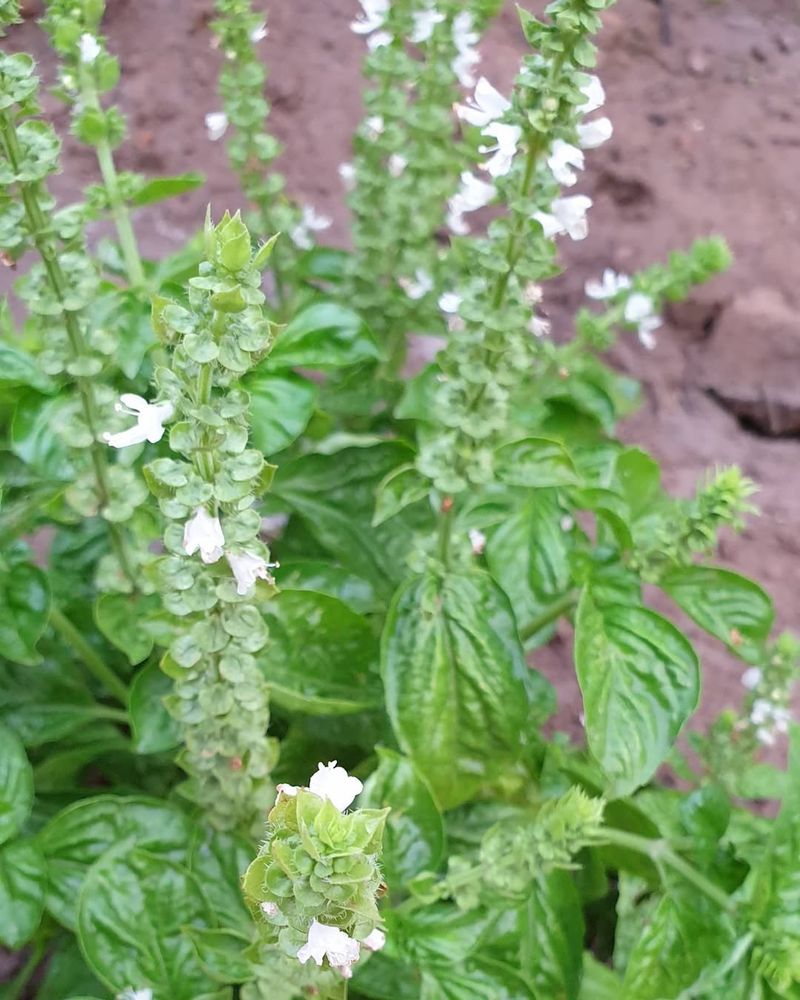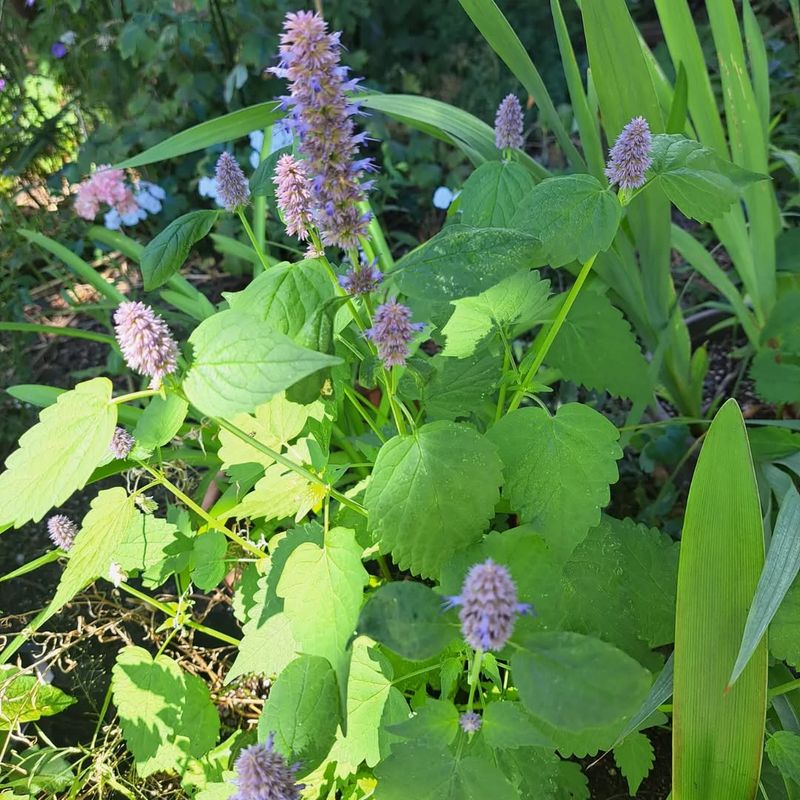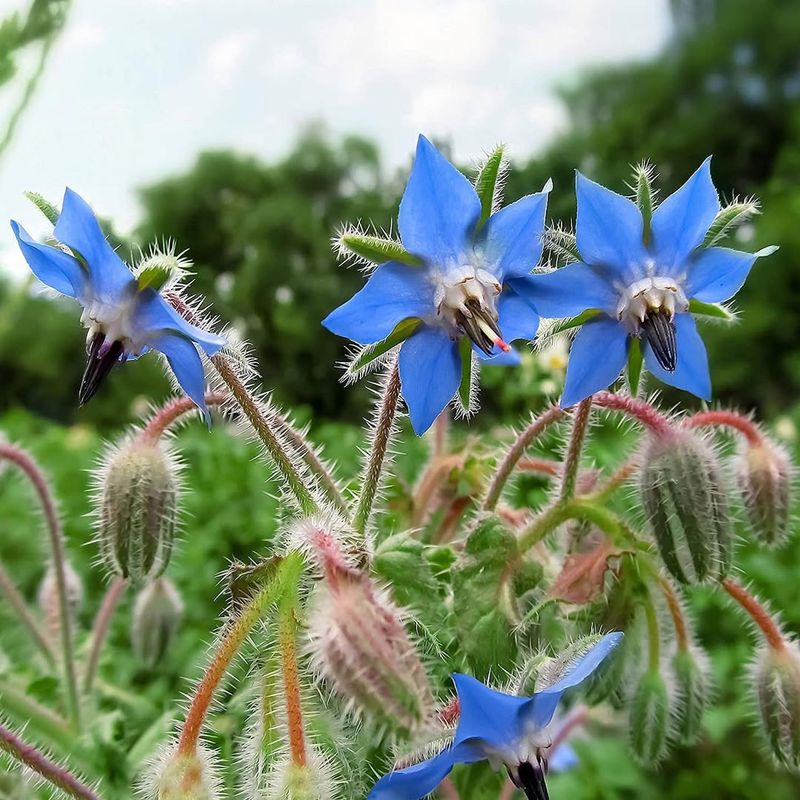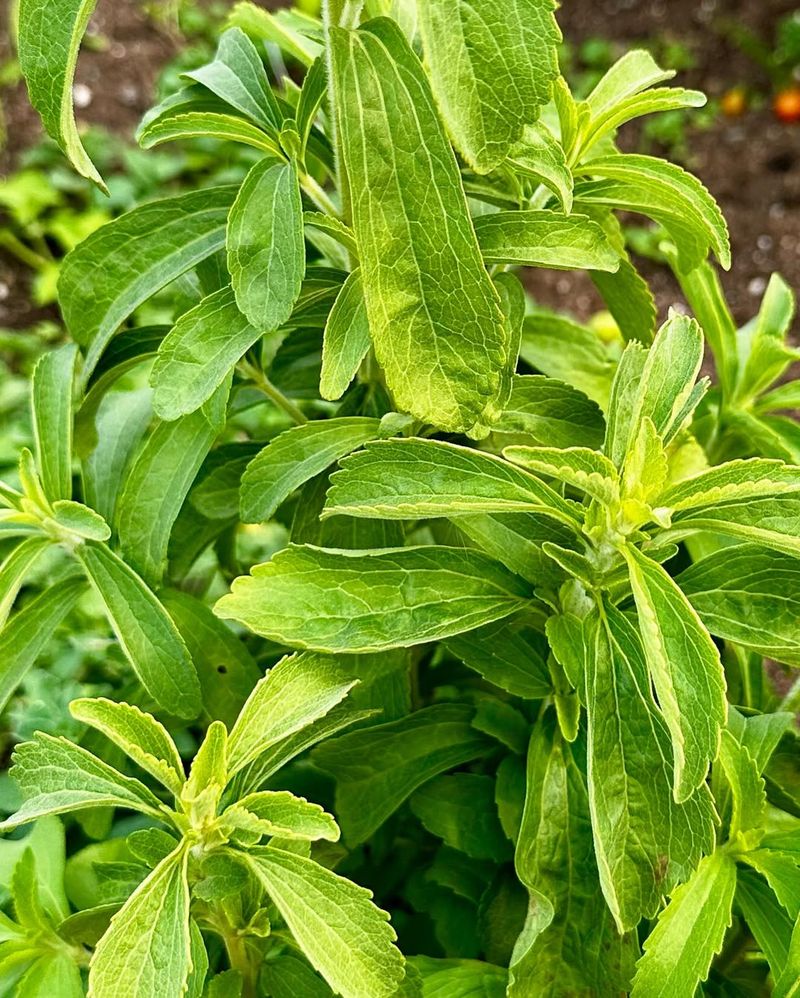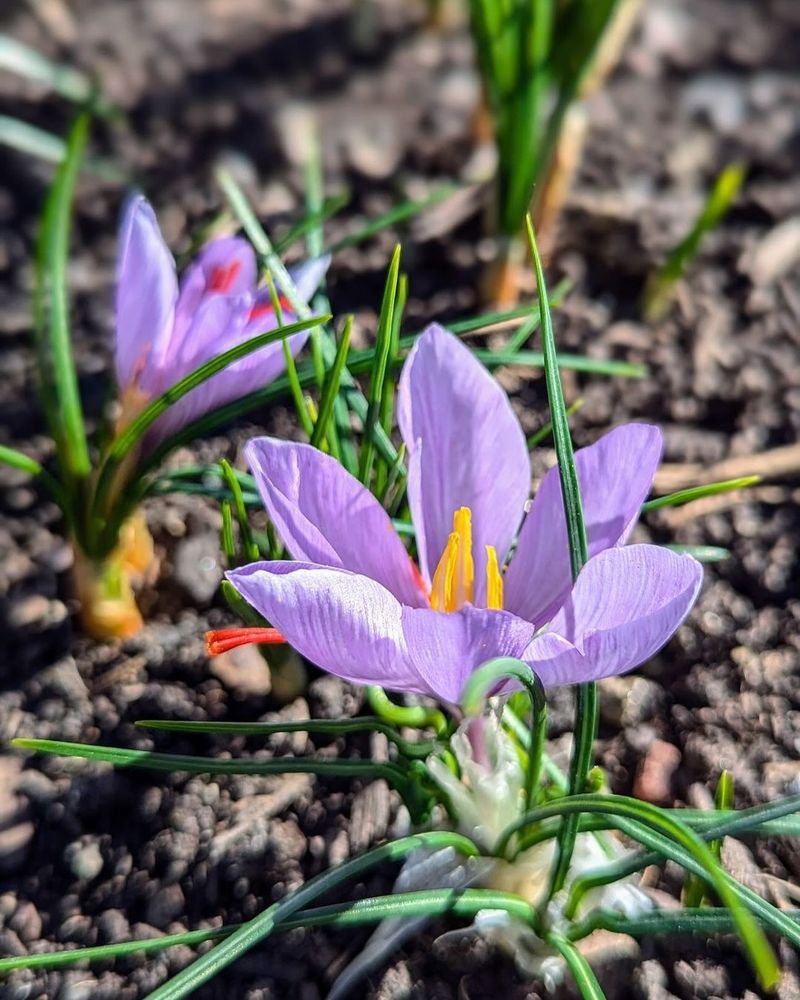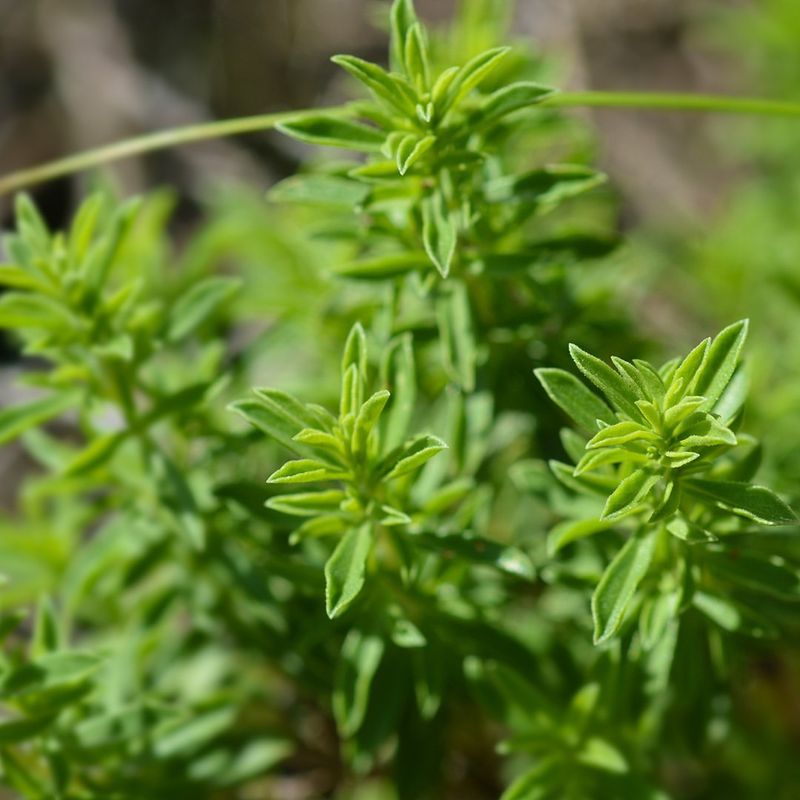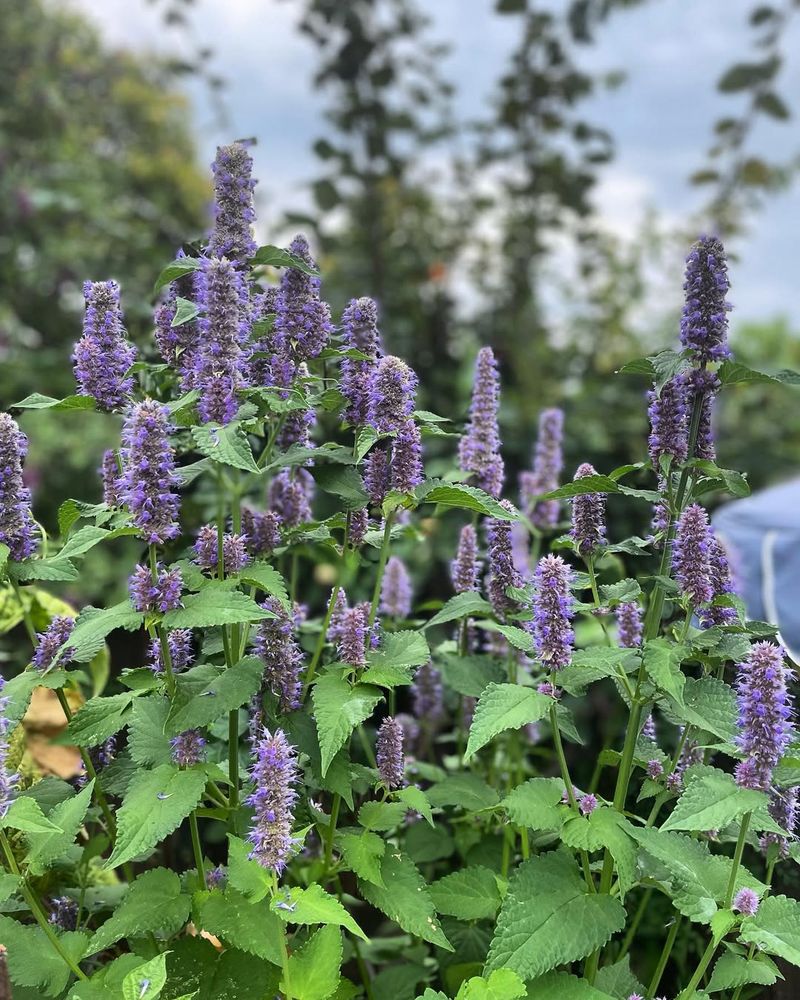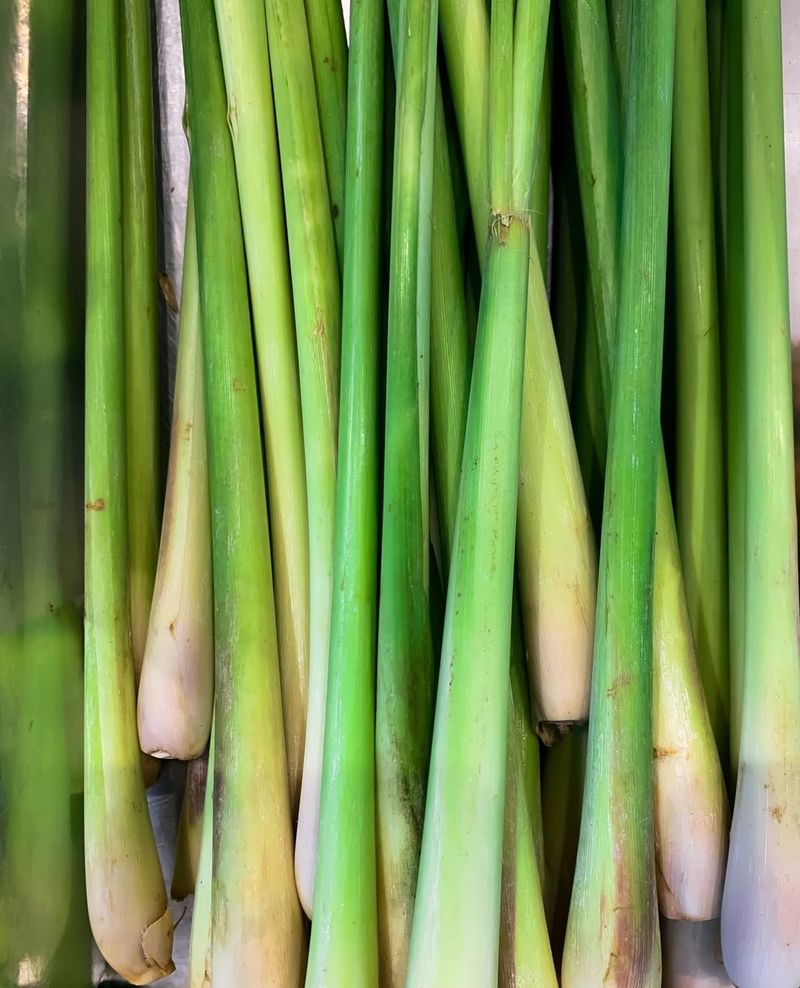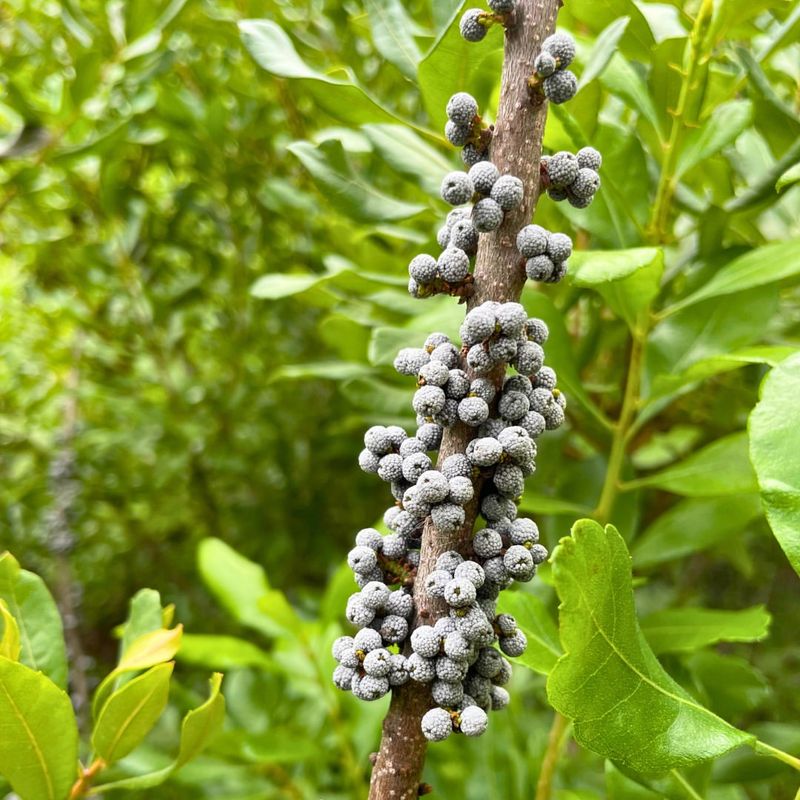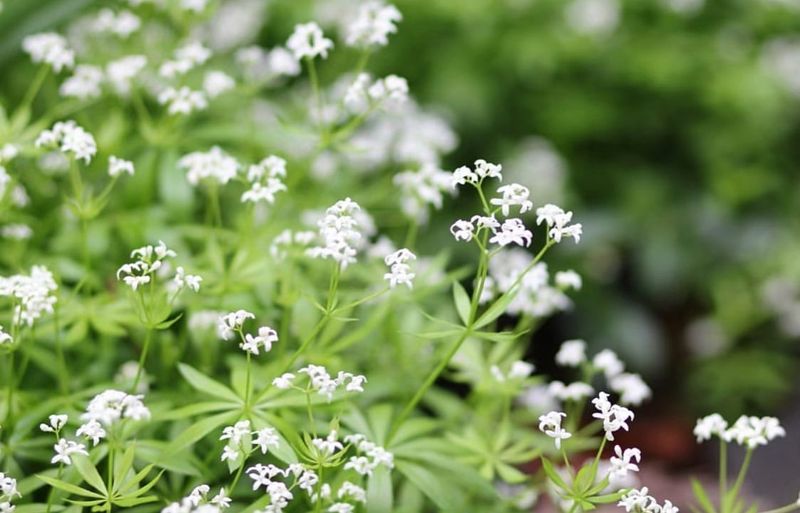Have you ever peeked at your garden and wondered why those herbs just don’t look quite right? I sure have! Growing herbs is supposed to be a straightforward affair, but it’s surprisingly easy to make a few slip-ups along the way.
Whether it’s overwatering, incorrect lighting, or even the wrong soil, there are countless ways to unintentionally sabotage your herb-growing efforts. Let me share with you 30 herbs that many of us are growing wrong and what we can do to change that.
1. Basil
Overwatering is a common mistake. Many herb enthusiasts believe that more water leads to better growth. However, basil thrives when the soil is allowed to dry out between waterings. Inadequate sunlight is another hurdle. This aromatic herb flourishes with full sun exposure. Consider placing it on a sunny windowsill.
In terms of soil, basil prefers well-drained varieties. Using heavy, clay-like soil can stunt its growth. A simple potting mix works wonders. Regular pruning encourages bushier growth. Avoid the temptation to leave it be, as this can lead to leggy plants. Each snip promotes a fuller, healthier plant.
2. Mint
It’s wild. Known for its invasive nature, mint can quickly overpower a garden if not contained. Planting it in a pot is a smart move. This herb loves moisture, but not soggy conditions. Ensure good drainage in its container.
Another common misstep is neglecting sunlight. Mint enjoys partial shade, which helps it maintain its rich flavor. Pruning is crucial. Regular trimming keeps it manageable and encourages new growth. Allowing it to flower may seem harmless, but it can make the leaves bitter. Keep those blooms in check for a delightful taste.
3. Cilantro
Bolting is its nemesis. Warm weather can cause cilantro to flower prematurely, leading to bitter leaves. Growing it in cooler months or providing shade helps.
Moisture is key. Cilantro prefers consistently damp soil but not waterlogged. Mulching can retain moisture effectively. Harvesting is an art. Picking leaves regularly prevents bolting and encourages fresh growth. Never ignore spacing. Crowded plants can lead to poor air circulation, promoting disease. Proper spacing ensures a healthy, thriving herb.
Growing cilantro requires a balance of coolness, moisture, and space.
4. Thyme
Neglect can be its downfall. Thyme thrives on neglect but needs some care to flourish. Well-drained soil is essential. A sandy, rocky mix mimics its native Mediterranean habitat.
Sunlight is another factor. Thyme enjoys basking in full sun, which enhances its flavor. Overwatering is a common misstep. It prefers dry conditions, so let the soil dry out between waterings. Pruning is beneficial. Cutting back woody stems fosters new growth and prevents it from becoming leggy.
Minimal care leads to maximum rewards with thyme.
5. Rosemary
A sunny spot works wonders. Rosemary thrives in bright, direct sunlight, enhancing its aromatic qualities. Well-drained soil is non-negotiable. A gritty, sandy mix is ideal.
Overwatering is a frequent error. Allow the soil to dry between waterings for optimum growth. Pruning is essential for bushy growth. Regular trimming prevents woody stems and promotes a lush appearance. Indoor rosemary requires good airflow. Stagnant air can lead to mildew, so ensure proper ventilation. With the right conditions, rosemary flourishes magnificently.
Mastering rosemary cultivation is all about light, drainage, and care.
6. Lavender
It’s all about the light. Lavender demands full sun to thrive, enhancing its fragrant blooms. Well-drained soil prevents root rot. Sandy or gravelly soil is perfect.
Avoid overwatering. Letting the soil dry out between waterings is crucial. Pruning is key to its success. Regular cutting encourages bushy growth and prolific blooming. Keep airflow in mind. Good circulation prevents fungal diseases. Lavender rewards those who carefully manage light, soil, and airflow.
Balancing these elements ensures a healthy, vibrant lavender plant.
7. Parsley
Shade can be its friend. Parsley appreciates partial shade, especially in hot climates. Moisture is vital but avoid soggy roots. Consistent, even watering is ideal.
Well-drained soil supports growth. A simple potting mix works well. Harvesting should be frequent. Regular cutting encourages new leaf production and prevents spindly growth. Never ignore airflow.
Adequate spacing ensures good circulation, reducing disease risk. With attention to light, water, and maintenance, parsley flourishes beautifully.
8. Oregano
Sunshine is its ally. Oregano loves basking in full sun, which intensifies its flavor. Well-drained soil is crucial. A rocky, sandy mix suits its Mediterranean origins.
Overwatering can lead to root rot. Let soil dry before rewatering. Pruning promotes health. Regular cutting encourages bushy growth and prevents legginess.
Spacing affects airflow. Crowded plants can suffer from poor air circulation, increasing disease risk. Ensuring space between them enhances health. A balance of light, soil, and care results in robust oregano.
9. Sage
Sunlight works magic. Sage thrives in full sun, which enhances its aromatic leaves. Well-drained soil prevents waterlogged roots.
A sandy soil mix is ideal. Overwatering is a common error. Allow the soil to dry between waterings to prevent root rot.
Pruning is beneficial. Regular trimming maintains its shape and encourages fresh growth. Proper spacing improves airflow, reducing disease risk. With the right conditions, sage grows vigorously.
10. Chives
Neglect leads to weakness. Chives thrive with minimal care but need basic attention. Well-drained soil supports health. A simple garden soil works well.
Sunlight is crucial. Chives enjoy full sun but tolerate partial shade. Overwatering can cause issues. Allow soil to dry between waterings.
Regular harvesting promotes growth. Frequent cutting encourages fresh, tender shoots. Proper spacing ensures good airflow and reduces disease risk. With the right balance, chives flourish beautifully.
11. Dill
Floppiness is frustrating. Dill can become floppy without proper support. Providing a stake or netting helps. Well-drained soil is essential. A light, sandy mix is ideal.
Sunlight is a priority. Dill loves full sun, which strengthens its growth. Overwatering can weaken it. Allow the soil to dry slightly between waterings.
Regular harvesting prevents legginess. Cutting back promotes bushy growth and prolongs its life. Proper spacing enhances airflow, reducing disease risk. With care, dill grows strong and healthy.
12. Tarragon
Lack of flavor is common. Tarragon thrives in full sun, which intensifies its taste. Well-drained soil is crucial for health.
A sandy, light mix suits its needs. Overwatering can cause root issues. Allow the soil to dry slightly between waterings.
Pruning encourages growth. Regular cutting promotes bushiness and prevents legginess. Spacing ensures good airflow, reducing disease risk. With the right balance of light, soil, and care, tarragon grows robustly.
13. Marjoram
Sunlight is crucial. Marjoram loves basking in full sun, which enhances its flavor. Well-drained soil is essential.
A gritty, sandy mix prevents root issues. Overwatering is a common mistake. Allow soil to dry between waterings.
Pruning promotes health. Regular trimming encourages bushy growth and prevents legginess. Proper spacing enhances airflow, reducing disease risk. With the right conditions, marjoram grows vigorously.
14. Lemon Balm
Spreading is inevitable. Lemon balm can quickly overtake a garden if not controlled. Planting it in a pot is wise.
Moisture is important. Consistent, even watering is ideal, but avoid sogginess. Partial shade suits it well, especially in hot climates.
Pruning controls spread. Regular cutting keeps it manageable and encourages fresh growth. Proper spacing ensures good airflow, reducing disease risk. With attention to light, water, and maintenance, lemon balm thrives beautifully.
15. Bay Leaf
Sunlight is vital. Bay leaf trees thrive in full sun, which supports their glossy leaves. Well-drained soil is essential.
A gritty, sandy mix works well. Overwatering can cause root rot. Allow soil to dry between waterings.
Pruning shapes growth. Regular cutting maintains its form and encourages new leaves. Proper spacing ensures airflow, reducing disease risk. With the right balance, bay leaf trees flourish vigorously.
16. Chervil
Shade suits it well. Chervil thrives in partial shade, especially in hot climates. Moisture is key.
Consistent watering is important, but avoid sogginess. Well-drained soil supports health. A light, sandy mix is ideal.
Regular harvesting encourages fresh growth. Cutting back prevents legginess and prolongs its life. Proper spacing ensures good airflow, reducing disease risk. With careful attention, chervil flourishes beautifully.
17. Rhubarb
Space is essential. Rhubarb needs room to grow, as it can spread out significantly. Well-drained soil is important.
A rich, loamy mix works best. Sunlight is beneficial. Rhubarb thrives in full sun but can tolerate partial shade.
Regular harvesting promotes growth. Cutting stalks encourages fresh shoots and maintains health. Proper spacing ensures good airflow, reducing disease risk. With attention to space, soil, and care, rhubarb grows robustly.
18. Sorrel
Moisture is crucial. Sorrel prefers consistently damp soil, but avoid waterlogging. Partial shade suits it well.
Well-drained soil supports health. A light, sandy mix is ideal. Regular harvesting encourages new growth.
Cutting back prevents legginess and prolongs its life. Proper spacing ensures good airflow, reducing disease risk. With care, sorrel flourishes beautifully.
19. Fennel
Support is necessary. Fennel can become top-heavy, requiring staking or support. Well-drained soil is essential.
A light, sandy mix works well. Sunlight is important. Fennel enjoys full sun, which strengthens its growth.
Regular harvesting promotes health. Cutting back encourages bushy growth and prolongs its life. Proper spacing ensures good airflow, reducing disease risk. With attention to light, soil, and care, fennel grows robustly.
20. Tansy
Wildness is its nature. Tansy can become invasive if not controlled. Planting it in a pot is wise.
Moisture is essential but avoid waterlogging. Well-drained soil supports health. A light, sandy mix works well.
Regular pruning keeps it manageable and encourages fresh growth. Proper spacing ensures good airflow, reducing disease risk. With attention to containment, water, and pruning, tansy thrives beautifully.
21. Catnip
Containment is crucial. Catnip can spread rapidly, so planting it in a pot is advisable. Sunlight is important.
Catnip enjoys full sun, which enhances its growth. Well-drained soil is essential. A light, sandy mix works well.
Regular pruning controls spread. Cutting back encourages new growth and maintains health. Proper spacing ensures good airflow, reducing disease risk. With the right balance of light, soil, and care, catnip grows vigorously.
22. Anise
Sunlight is crucial. Anise thrives in full sun, which enhances its aromatic qualities. Well-drained soil is important.
A light, sandy mix supports health. Overwatering can cause issues. Allow soil to dry slightly between waterings.
Regular harvesting promotes growth. Cutting back encourages bushy growth and prolongs its life. Proper spacing ensures good airflow, reducing disease risk. With attention to light, soil, and care, anise flourishes beautifully.
23. Borage
Spreading is common. Borage can quickly take over a garden if not controlled. Planting it in a pot is advisable.
Moisture is important. Consistent, even watering is ideal, but avoid sogginess. Full sun enhances its growth.
Regular pruning controls spread. Cutting back encourages new growth and maintains health. Proper spacing ensures good airflow, reducing disease risk. With care, borage grows robustly.
24. Stevia
Sunlight impacts sweetness. Stevia thrives in full sun, which enhances its sweet leaves. Well-drained soil is crucial.
A light, sandy mix works well. Overwatering is a common mistake. Allow soil to dry slightly between waterings.
Regular pruning encourages bushiness. Cutting back promotes new growth and prolongs its life. Proper spacing ensures good airflow, reducing disease risk. With attention to light, soil, and care, stevia flourishes beautifully.
25. Saffron
Soil is key. Saffron requires well-drained soil to thrive, preventing bulb rot. Sandy or loamy soil is ideal.
Sunlight is vital. Saffron enjoys full sun, which supports its vibrant blooms. Overwatering can cause issues. Allow soil to dry slightly between waterings.
Regular harvesting promotes health. Collecting stigmas encourages fresh growth and prolongs its life. Proper spacing ensures good airflow, reducing disease risk. With the right conditions, saffron grows robustly.
26. Winter Savory
Sunshine works wonders. Winter savory thrives in full sun, enhancing its flavor. Well-drained soil is essential.
A gritty, sandy mix suits its needs. Overwatering can cause problems. Allow soil to dry between waterings.
Regular pruning encourages bushiness. Cutting back promotes new growth and prolongs its life. Proper spacing ensures good airflow, reducing disease risk. With care, winter savory flourishes beautifully.
27. Hyssop
Sunlight is vital. Hyssop loves full sun, which enhances its aromatic leaves. Well-drained soil is important.
A light, sandy mix supports health. Overwatering can cause issues. Allow soil to dry slightly between waterings.
Regular pruning promotes growth. Cutting back encourages bushy growth and prolongs its life. Proper spacing ensures good airflow, reducing disease risk. With attention to light, soil, and care, hyssop grows robustly.
28. Lemongrass
Sunlight enhances its aroma. Lemongrass thrives in full sun, which intensifies its citrusy scent. Well-drained soil is crucial.
A gritty, sandy mix is ideal. Overwatering can cause root rot. Allow soil to dry between waterings.
Regular pruning promotes bushiness. Cutting back encourages new growth and prolongs its life. Proper spacing ensures good airflow, reducing disease risk. With the right conditions, lemongrass flourishes beautifully.
29. Bayberry
Sunlight supports its health. Bayberry thrives in full sun, which enhances its growth. Well-drained soil is essential.
A sandy, gritty mix works well. Overwatering can cause root issues. Allow soil to dry between waterings.
Regular pruning shapes growth. Cutting back encourages new branches and maintains health. Proper spacing ensures good airflow, reducing disease risk. With attention to light, soil, and care, bayberry grows vigorously.
30. Sweet Woodruff
Shade suits it well. Sweet woodruff thrives in partial shade, especially in hot climates. Moisture is key.
Consistent watering supports growth, but avoid sogginess. Well-drained soil is important. A light, sandy mix works well.
Regular harvesting encourages fresh growth. Cutting back prevents legginess and prolongs its life. Proper spacing ensures good airflow, reducing disease risk. With care, sweet woodruff flourishes beautifully.

